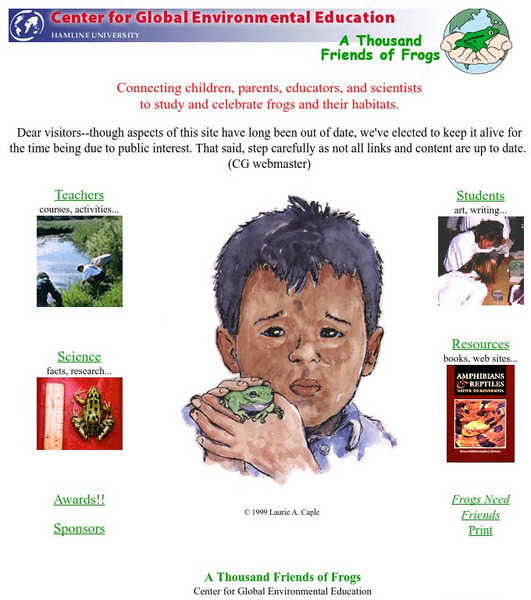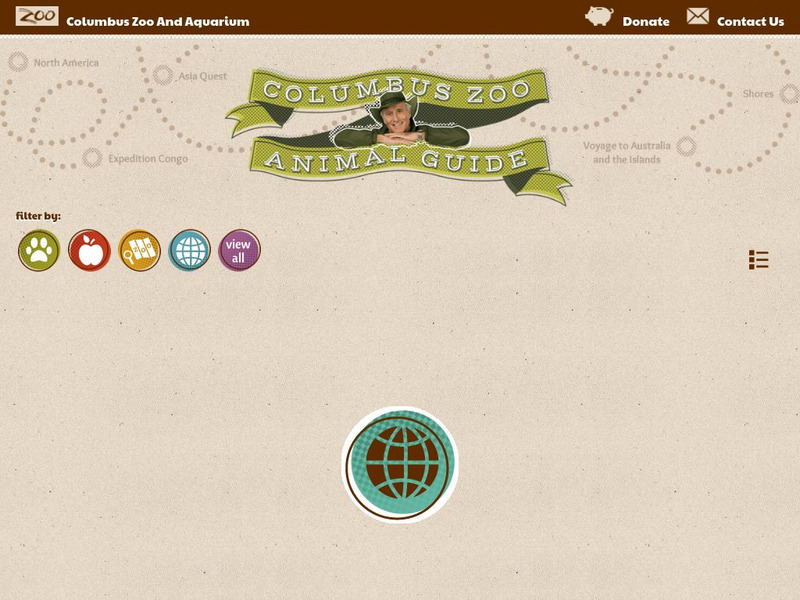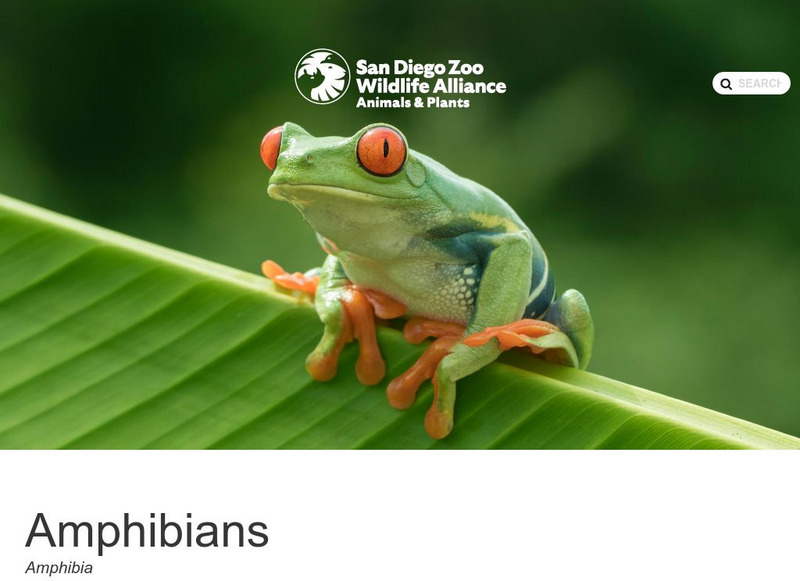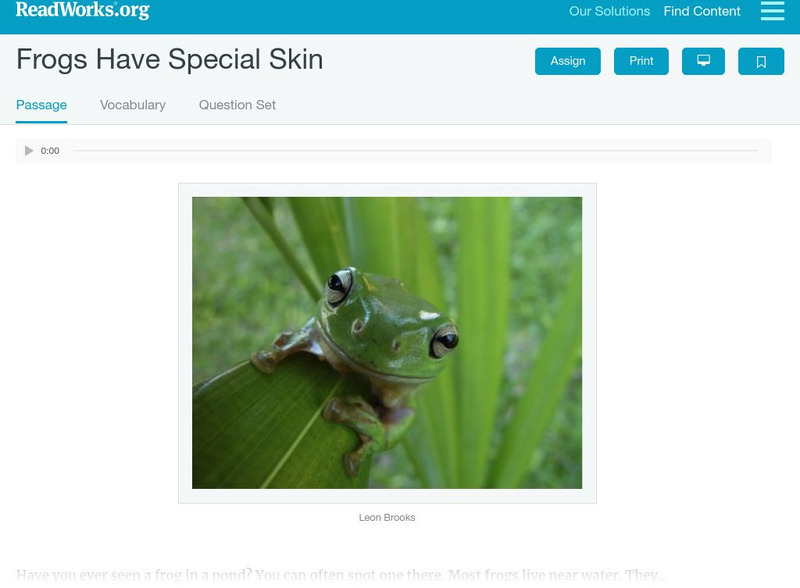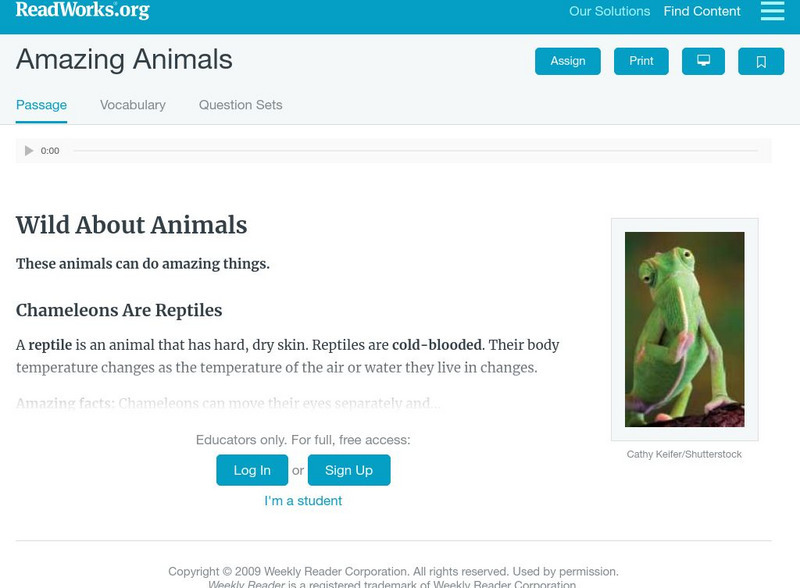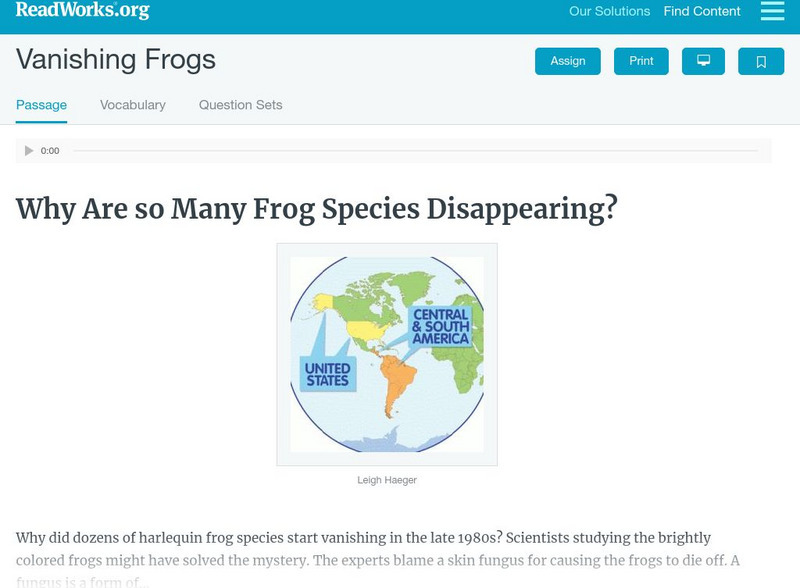San Diego Zoo Global
San Diego Zoo: Poison Frog
This excellent resource from the San Diego Zoo presents extensive information on poison frogs including details about their habitat, physical characteristics, size, diet, family life, conservation status, and fun facts.
University of Florida
Florida Museum of Natural History: Animals 1: Fur, Fins, Feathers, and More
This teacher's guide focuses on familiar animals such as mammals, birds, reptiles, amphibians, and fish.
Environmental Education for Kids
Eek!: Amphibians
Amphibians are cold-blooded, smooth-skinned vertebrates. Most live some of their life in water and some on land. The most common amphibian critter is a frog but there are many others. Read about Wisconsin's many amphibians here.
Oakland Zoo
Oakland Zoo: Colorado River Toad
Meet the Colorado River Toad and discover fascinating facts and statistics. Learn about its physical characteristics, habitat, diet, behavior, breeding patterns, conservation, and more.
PBS
Pbs Learning Media: Everyday Learning
Learning does not take place only in the classroom. Learning occurs naturally, every day! This KET collection uses original animation and wonderful, visual images to introduce basic concepts of math, science, social studies, art, and...
Canadian Museum of Nature
Canadian Museum of Nature: Chorus Frog
Some of the smallest frogs in Canada, the chorus frogs, are detailed here.
Exploratorium
Exploratorium: Frogs, a Disappearing Act
At this site students can read about how frogs camouflage to avoid predators. There is an interactive exhibit too! (Must have the Shockwave plug-in to see animation.)
PBS
Pbs Teachers:costa Rica: Why So Many Frogs?
Explore the different stages in the growth of a frog, explain why organisms produce large numbers of young and determine the survival rate of a population of tadpoles under controlled conditions.
Other
Center for Global Environmental Education: A Thousand Friends of Frogs
An in-depth site about the world of frogs. The site includes teacher, student, science, and research sections. There are plenty of facts and activities.
Broward Education Foundation
Padded Frogs for Ranidaphiles (People Who Love Frogs) [Pdf]
Students assume a part as a gaming developer and are tasked with designing new frogs for a future update release of the popular game, Pocket Frogs by Nimblebit, LLC. They have to learn the game: manage its math components of coins,...
National Health Museum
Access Excellence: Mystery Spot: Croak
Access Excellence provides this fictional interactive story that explores the possible reasons for a disappearing species of frogs. Follow the clues, and email your answer!
Annenberg Foundation
Annenberg Learner: Journey North: Signs of Spring: Frogs
A comprehensive presentation that answers a number of questions about frogs. In addition, this resource contains lessons and activities that can be used in the classroom. A general overview is given of migration and the annual cycle.
Smithsonian Institution
Smithsonian National Zoo: Zoogoer Magazine: Toxic Toads and Tyrannical Treefrogs
Howard Youth's article in Zoogoer Magazine highlights facts and information related to various types of treefrogs and toads that are toxic. The types include the inch-long greenhouse frog, the cane toad, Cuban treefrogs, and more.
Smithsonian Institution
Smithsonian National Zoo: Zoogoer Magazine: The Rainbow Connection
Stanley Rand, in his article "Frogs: The Rainbow Connection" looks at a variety of topics related to frogs including types and species, habitats, interesting facts, the difference between frogs and toads, and more.
Other
Nature Canada: Nature Watch: Frog Watch
FrogWatch is a Canadian program that uses volunteers to record data about a variety of frog species across the country, and then submit their observations. Monitoring frogs provides valuable information about the health of ecosystems and...
Other
Columbus Zoo and Aquarium: Amphibians
This interactive animal guide from the Columbus Zoo highlights general information and fun facts about amphibians such as the Panamanian Golden Frog and the Poison Dart Frog. Select an animal from the list to begin exploring.
A-Z Animals
A Z Animals: Animal Facts: Monte Iberia Eleuth (Eleutherodactylus Iberia)
Provides an overview of the Monte Iberia Eleuth, including its habitat, appearance, behavior, diet, breeding, and much more. Images of this species and statistics can also be found here.
San Diego Zoo Global
San Diego Zoo: Amphibians
This resource offers extensive information about amphibians. Visitors can click on the listed amphibians for further information.
American Museum of Natural History
American Museum of Natural History: Goliath Frog O Logy Card
Flip this interactive OLogy card to find a definition, fast facts, questions and answers, and other bite-size pieces of information about the Goliath frog.
Other
Welcome to Puerto Rico: The Coqui
This page presents the Puerto Rican frog the Coqui, part of a diverse family of frog species that are found throughout the Caribbean and Central America.
Read Works
Read Works: Frogs Have Special Skin
[Free Registration/Login Required] An informational text about frogs and their unique skin. A question sheet is available to help students build skills in reading comprehension.
Read Works
Read Works: Amazing Animals
[Free Registration/Login Required] This nonfiction passage discusses distinguishing features of mammals, reptiles, and amphibians. This passage is a stand-alone curricular piece that reinforces essential reading skills and strategies and...
Read Works
Read Works: Freaky Frogs
[Free Registration/Login Required] The author describes the production of see-through frogs by scientists in Japan, and this transparent skin allows to see and learn about the frog's organs more easily. This passage is a stand-alone...
Read Works
Read Works: Vanishing Frogs
[Free Registration/Login Required] Students read about a skin fungus causing the harlequin frog species to become endangered. A question sheet is available to help students build skills in classifying and categorizing.







